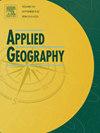Technology transfer in asymmetric innovation corridors: Theory and empirical evidence from China
IF 4
2区 地球科学
Q1 GEOGRAPHY
引用次数: 0
Abstract
While top universities, tech giants, venture capitalists, and professional managers are pivotal in creating innovation corridors in Western developed countries, they are often lacking or scarce in emerging economies. China is currently developing an “asymmetric” innovation corridors model led by government policy, with the G60 Innovation Corridor as a noteworthy success story. However, this phenomenon has received limited theoretical attention. This paper conducts a social network analysis of technology transfer in strategic emerging industries along the G60 Innovation Corridor. We find that the scale of technology transfer from core cities to relatively less developed cities along the corridor is increasing, with numerous new technology transfer pathways emerging. Empirical findings further indicate that the government-led policy plays a significant role in this process. The specific internal mechanisms include the G60 Innovation Corridor policy's emphasis on integrating technology, digitalization, and finance, facilitating the agglomeration of high-tech enterprises, and enhancing innovation ecology (e.g., basic research, investment in scientific research, and openness to external influences). Moreover, our study reveals that policies related to the G60 Innovation Corridor not only facilitate firm-to-firm technology transfer but also enable technology transfer from scientific organizations (universities, research institutes) in core cities to firms in relatively less developed cities along the corridor.

非对称创新走廊中的技术转移:来自中国的理论与经验证据
在西方发达国家,顶尖大学、科技巨头、风险投资家和职业经理人是创建创新走廊的关键,但在新兴经济体,这些因素往往缺乏或稀缺。中国目前正在发展由政府政策主导的“非对称”创新走廊模式,G60创新走廊是一个值得注意的成功案例。然而,这一现象在理论上受到的关注有限。本文对G60创新走廊沿线战略性新兴产业的技术转移进行了社会网络分析。研究发现,从核心城市到走廊沿线相对欠发达城市的技术转移规模不断扩大,并出现了许多新的技术转移途径。实证结果进一步表明,政府主导的政策在这一过程中发挥了重要作用。具体的内部机制包括G60创新走廊政策强调技术、数字化和金融的融合,促进高新技术企业集聚,增强创新生态(如基础研究、科研投入和对外开放)。此外,我们的研究表明,G60创新走廊的相关政策不仅促进了企业间的技术转移,而且还促进了核心城市的科学组织(大学、研究所)向走廊沿线相对欠发达城市的企业的技术转移。
本文章由计算机程序翻译,如有差异,请以英文原文为准。
求助全文
约1分钟内获得全文
求助全文
来源期刊

Applied Geography
GEOGRAPHY-
CiteScore
8.00
自引率
2.00%
发文量
134
期刊介绍:
Applied Geography is a journal devoted to the publication of research which utilizes geographic approaches (human, physical, nature-society and GIScience) to resolve human problems that have a spatial dimension. These problems may be related to the assessment, management and allocation of the world physical and/or human resources. The underlying rationale of the journal is that only through a clear understanding of the relevant societal, physical, and coupled natural-humans systems can we resolve such problems. Papers are invited on any theme involving the application of geographical theory and methodology in the resolution of human problems.
 求助内容:
求助内容: 应助结果提醒方式:
应助结果提醒方式:


